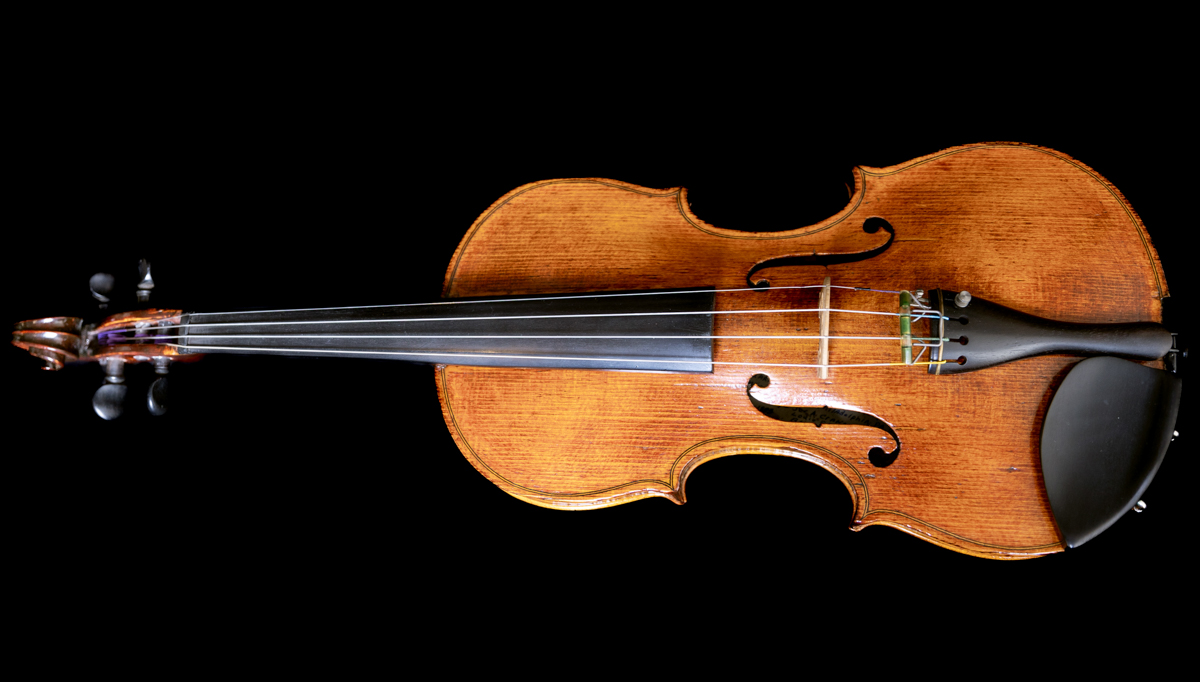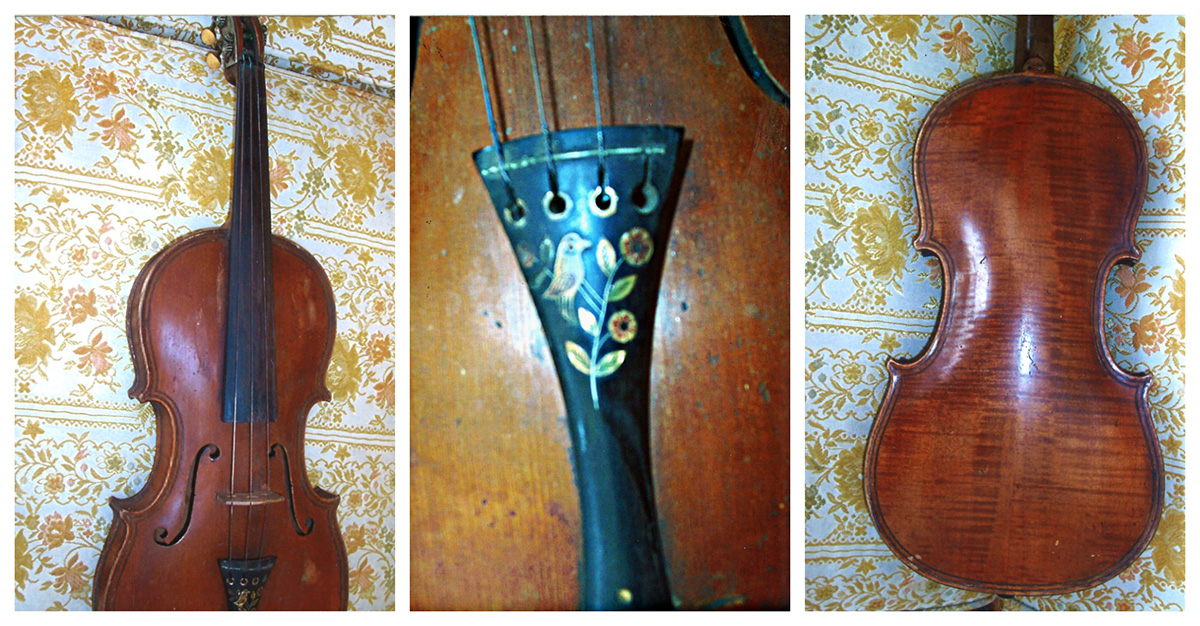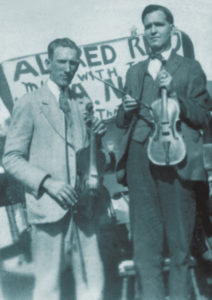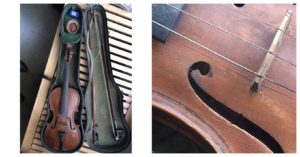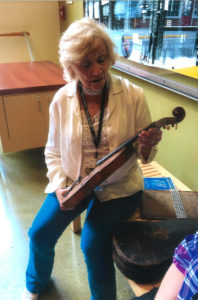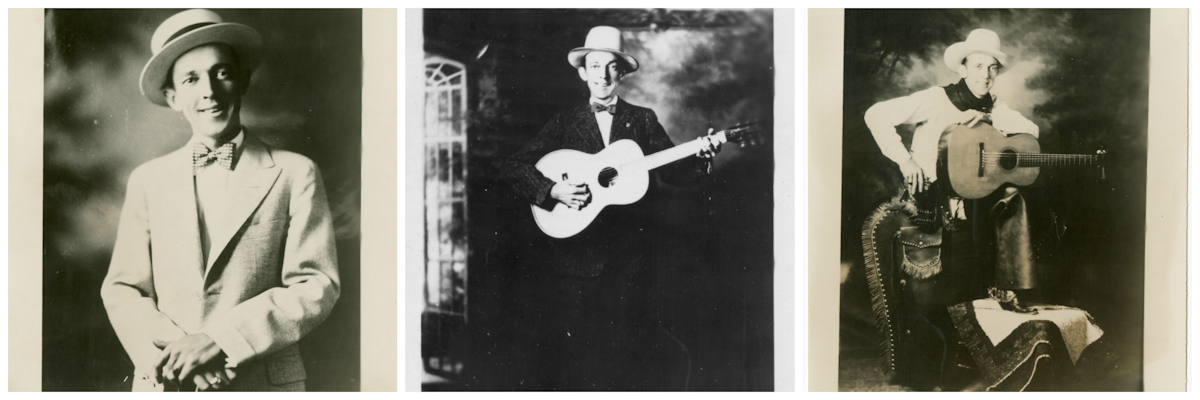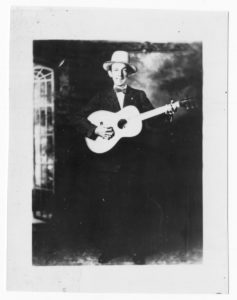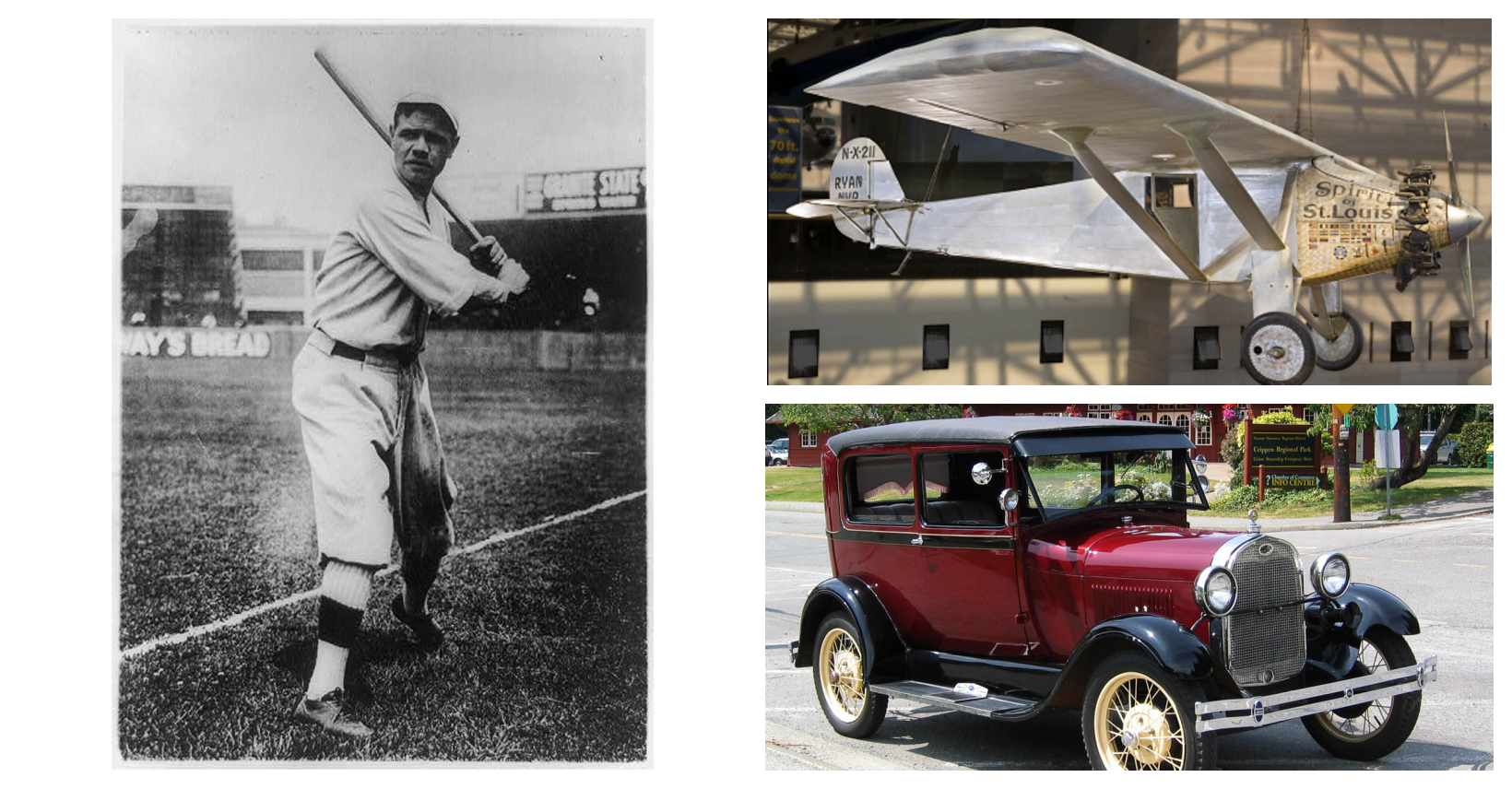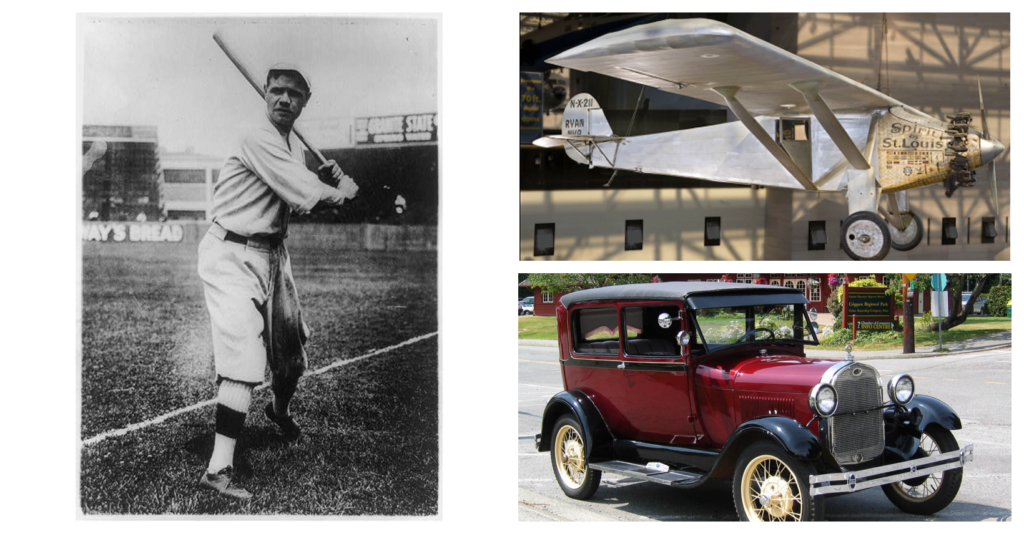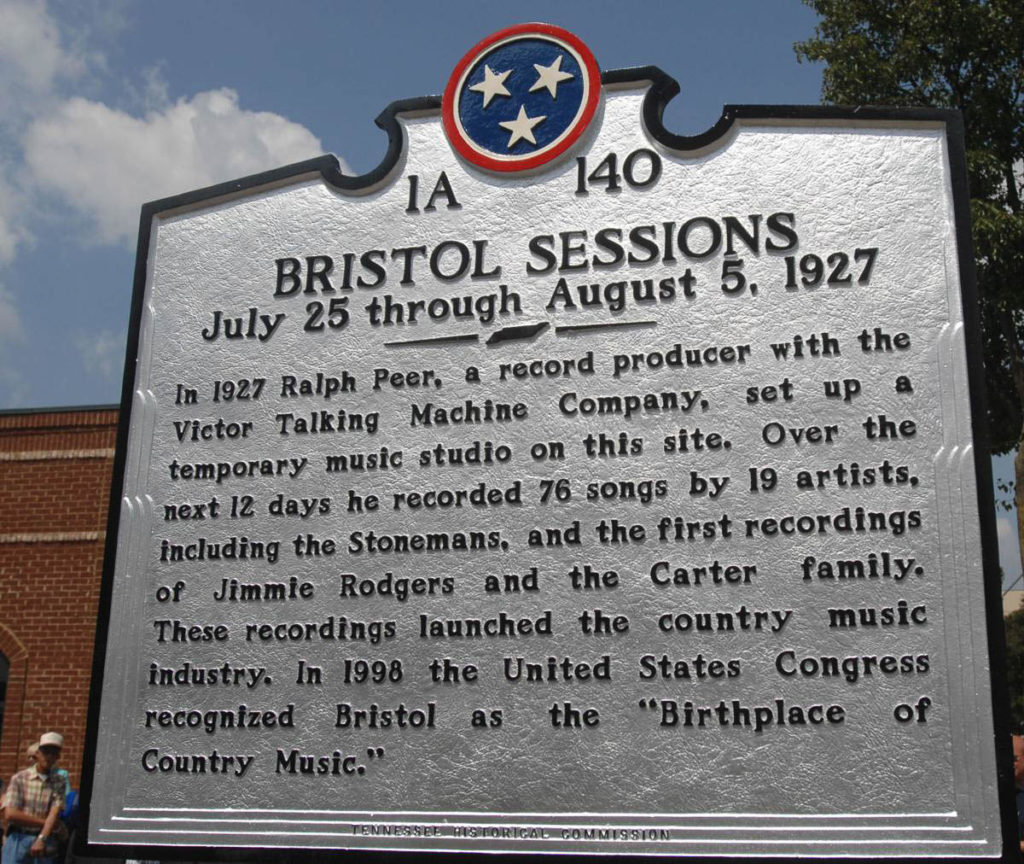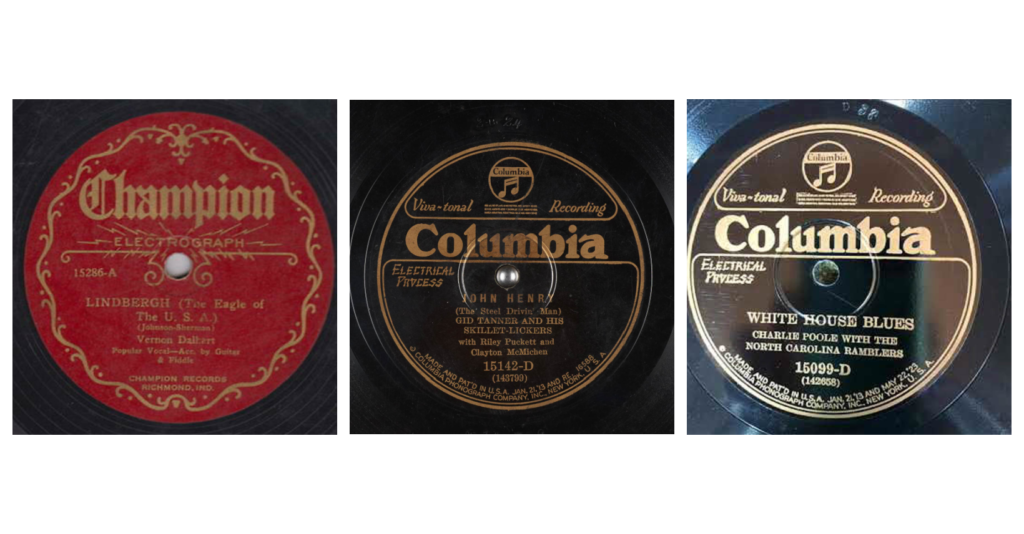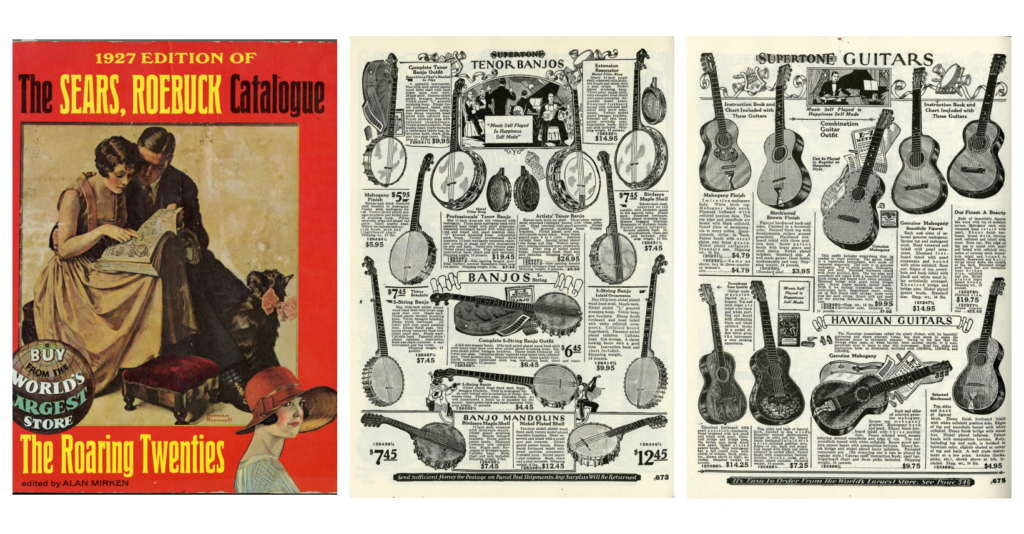By Julia Underkoffler, Collection Specialist at the Birthplace of Country Music Museum
Fiddle me this: What’s the difference between a violin and a fiddle? One has strings, and the other has strangs!
East Tennessee is known for its music, and in particular, it was home to several well-known and influential old-time and bluegrass fiddlers. The museum is fortunate to have three fiddles on loan that were owned and played by Charlie Bowman, Edd Vance, and Benny Sims, all of which are currently on special display in our permanent exhibits. Instruments – and other objects – like these help us to tell the stories of the music, people, and cultural heritage that make our region so special.
Fiddlin’ Charlie Bowman was born on July 30, 1889 in Gray Station, Tennessee. Bowman started playing music from a young age – he started recording as early as 1908 on a neighbor’s Edison Cylinder phonograph, and by the early 1920s, he was regularly being hired to play at square dances and political rallies. When Bowman started to enter fiddling contests around the area, other local fiddlers got quite mad because Bowman just kept on winning!
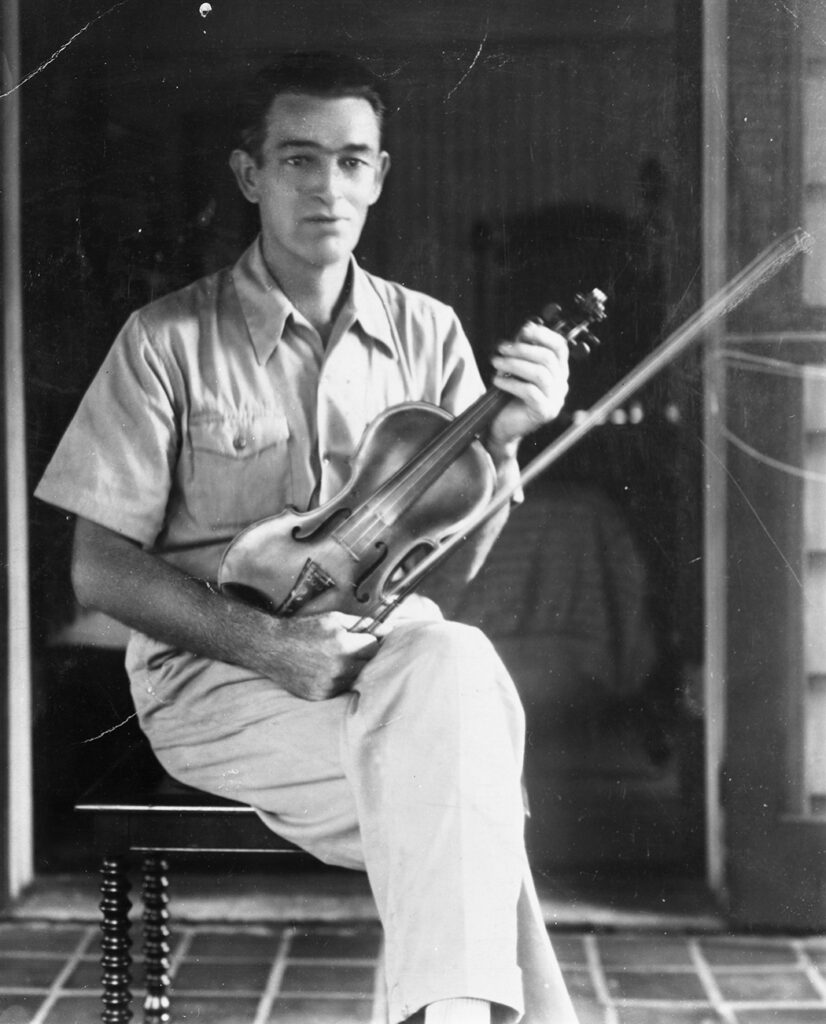
In 1928, when the Columbia record label came to Johnson City, Tennessee, to do a location recording session, Bowman and several other musicians, including his daughters, recorded six songs. He also traveled the East Coast vaudeville circuit with his daughters and his band – in 1931 alone, they played 249 days of the year. Bowman was later hired to perform by B. Carroll Reece, who served as representative for the first district of Tennessee. They stayed lifelong friends, and Bowman even wrote “Reece Rag” for Congressman Reece. Alongside his solo career, Bowman was also a member of the Hill Billies and the Blue Ridge Ramblers.
The museum has two Bowman family instruments on loan: Charlie’s fiddle and his daughter Jenny’s accordion, which is currently on display in the museum’s special exhibit, I’ve Endured Women in Old-Time Music.
Edd Vance – more commonly known as Red – was born on November 19, 1923 in Sullivan County, Tennessee. Red became recognized in East Tennessee for his old-time fiddling skill, and he performed at The Down Home, a well-known musical hub in Johnson City, Tennessee.
Red followed in the footsteps of his father, Dudley Vance, who was born on March 12, 1880 in Bluff City, Tennessee. During the second week of May 1925, Dudley played at the first Mountain City Fiddlers’ Convention, held at a local high school. This event featured famous fiddlers Charlie Bowman, Fiddlin’ John Carson, Fiddlin’ Cowan Powers, Charlie Powers, and G. B. Grayson. Dudley famously beat everyone with his rendition of “Twinkle Twinkle Little Star.” Two years later, Dudley and his brother traveled to Winston-Salem, North Carolina, to record three records for Okeh Records, under the band name Vance’s Tennessee Breakdowners. These were the last professional recordings done by Dudley. The museum has Edd Vance’s fiddle and several other items related to Dudley and Edd Vance on loan from their descendants.

Benny Sims was born on August 4, 1924 in Sevier County, Tennessee. Sims was drafted into the U.S. Army Air Corps and was stationed in Foggia, Italy during World War II. While in Italy, Sims played with the U.S. Air Force Orchestra. He played fiddle with the Morris Brothers, but he is best known for his time performing with Lester Flatt and Earl Scruggs. Sims recorded with Flatt & Scruggs over 25 times as part of the Bluegrass Boys, including on their famous “Foggy Mountain Breakdown.”
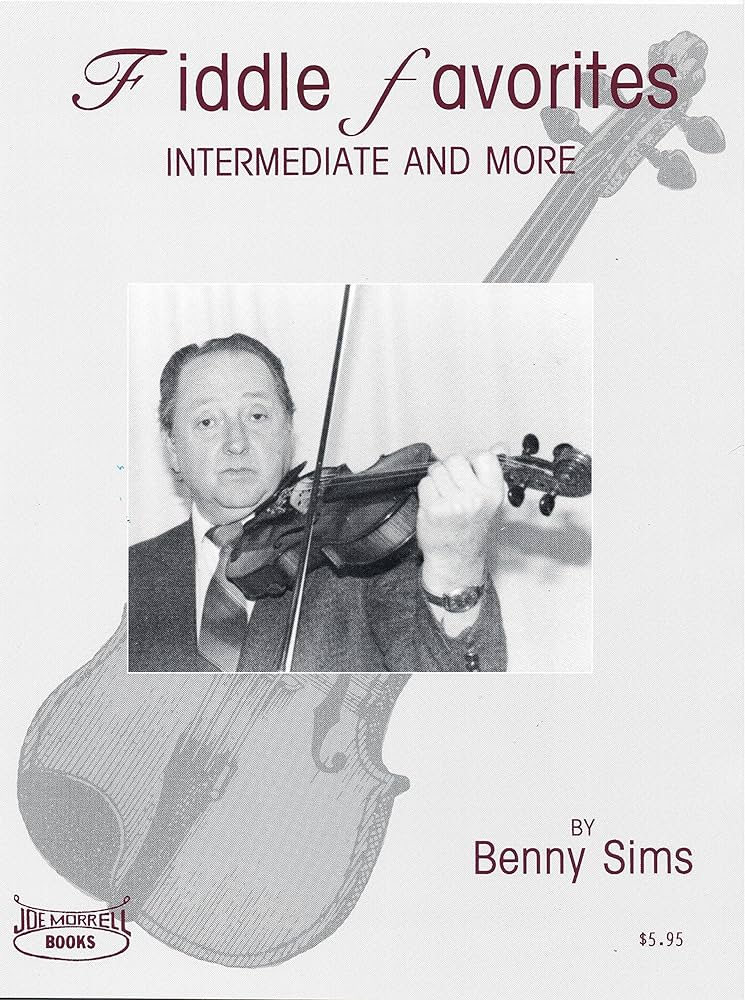
After Sims left Flatt & Scruggs, he went to work for WNOX in Knoxville and WJHL-TV in Johnson City until he retired in the early 1960s. When he retired from the music industry he worked at Life & Casualty Insurance Company and gave private fiddle lessons. Just months before Sims’ death in 1995, the Birthplace of Country Music Alliance held a tribute to him at the Paramount Center for the Arts. Today, East Tennessee State University awards the Benny Sims Scholarship to one Bluegrass, Old-Time, and Roots Music Student each year.



